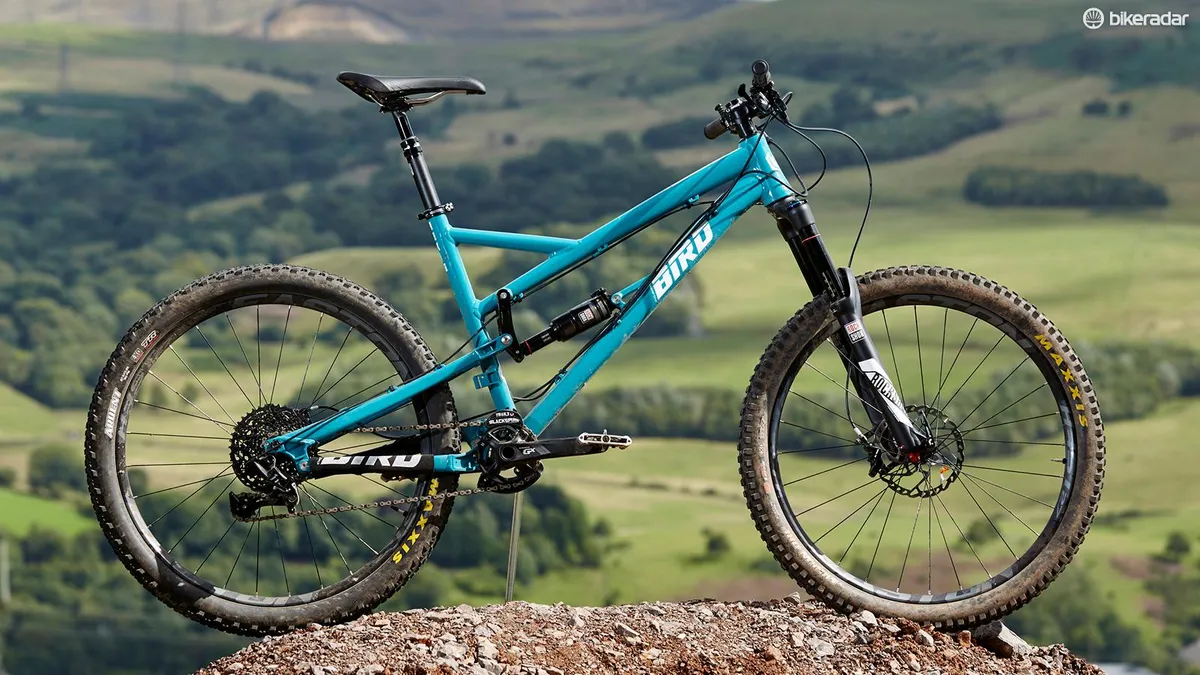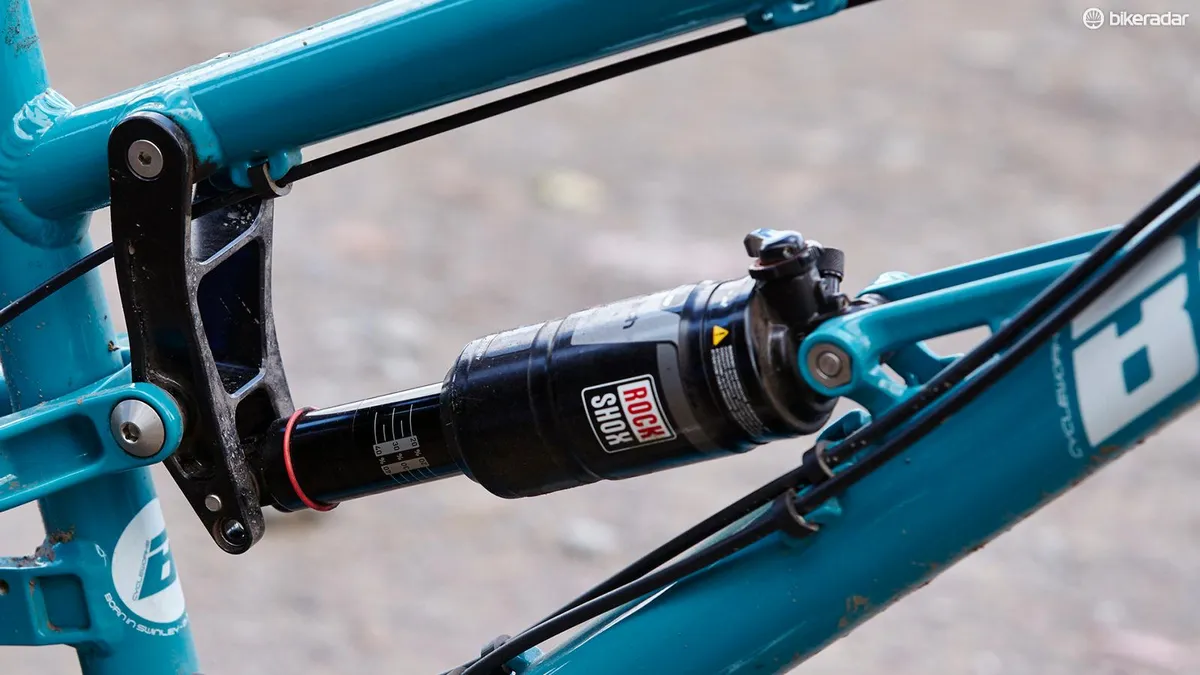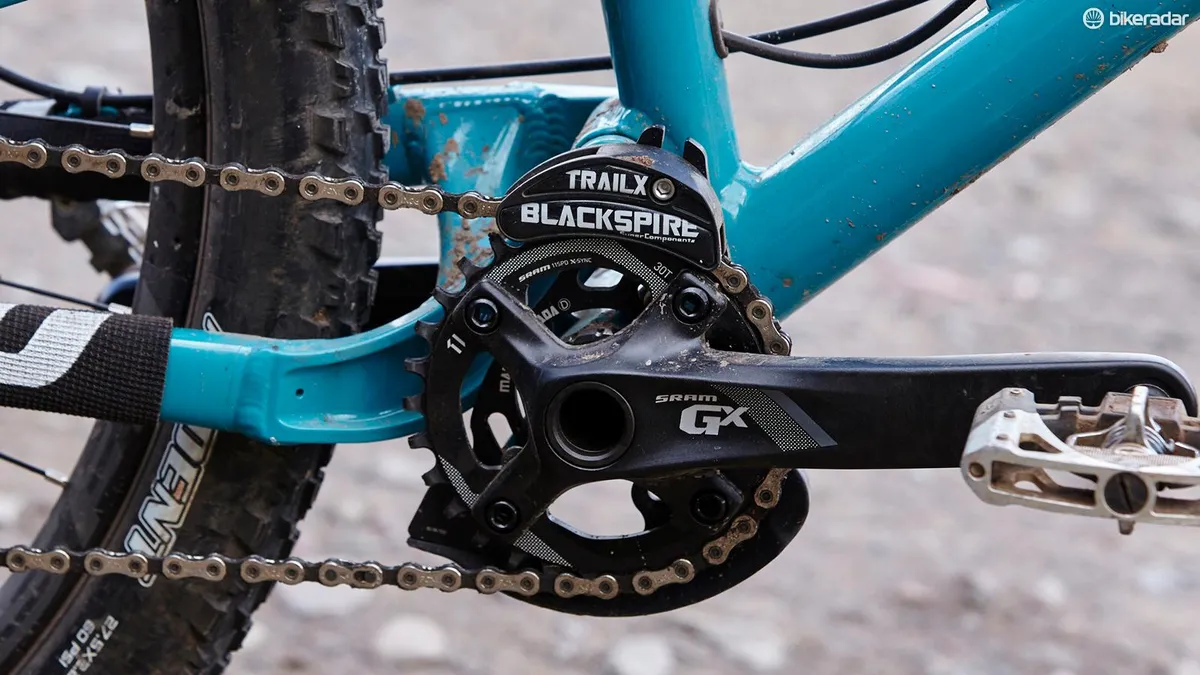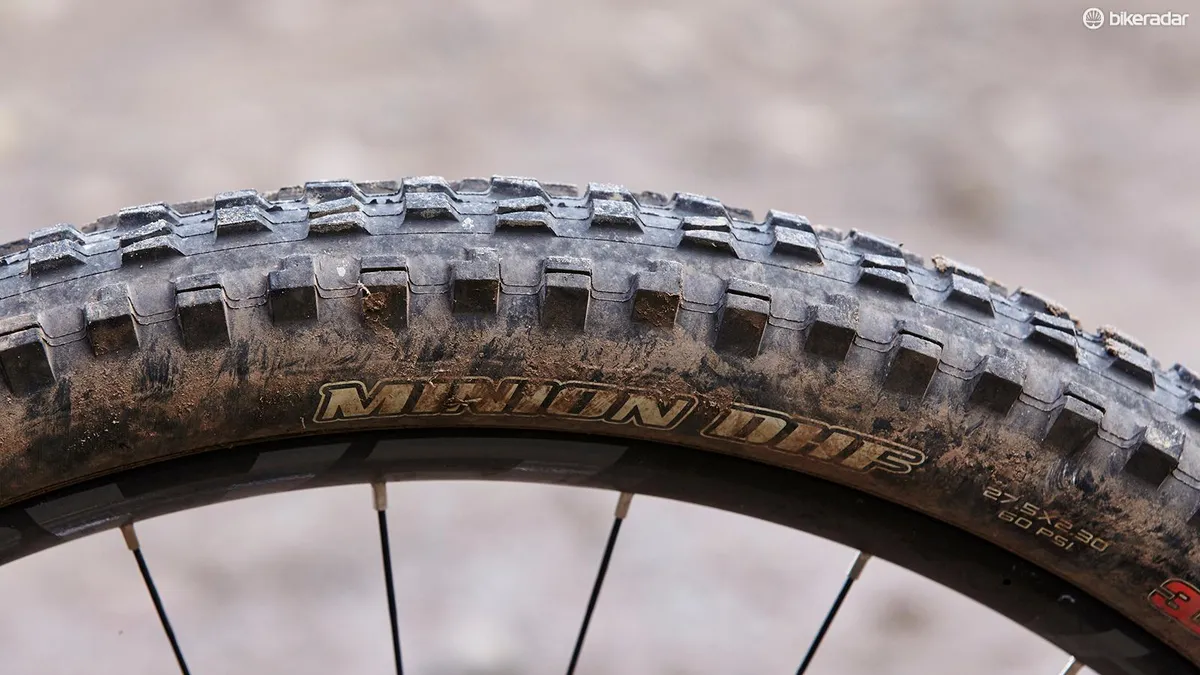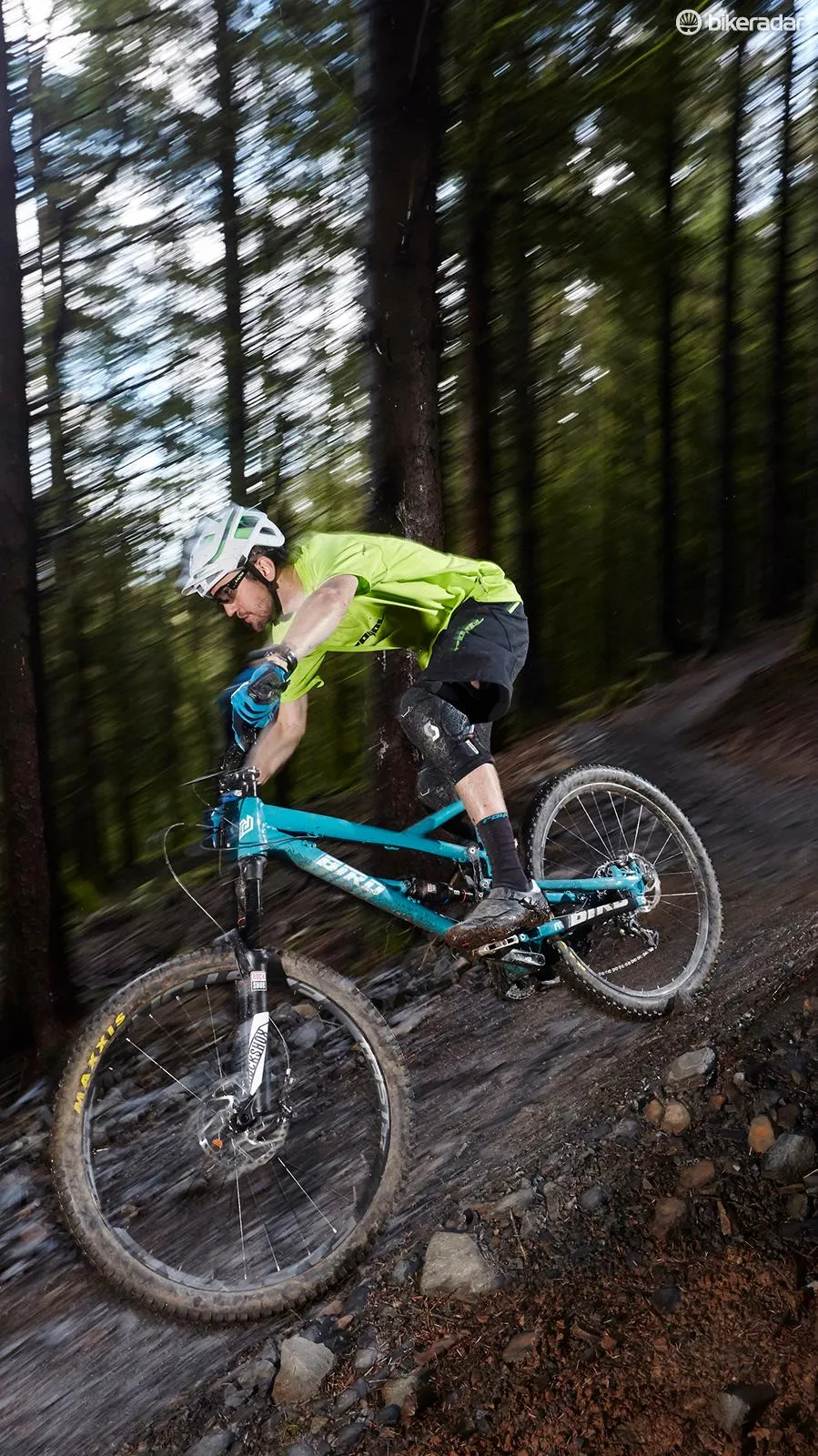Bird is still a fledgling brand (sorry) but its buy-direct approach has seen its hardtails fly off the shelves. The Aeris, which first impressed us in a different build 12 months ago, is Bird's debut full-sus machine, and it’s a cracking example.
The British brand capitalises on the direct sales model by enabling you to pick and choose the parts you want – everything from the fork to the grips can be swapped to suit your budget or personal taste. This adds to already great value by avoiding those all-too-common swaps. Prices start at £1,595, but we built up a mid-range bike with the aim of striking a great balance of price and performance.
- Highs: Custom options mean no need for swaps after buying; aggressive geo allows for confident descending; supple, adjustable and well balanced suspension
- Lows: Flex in the frame when ridden hard; seat angle could be steeper
- Buy if: You're anyone other than a well-built hooligan of a rider
Frame and equipment: modern numbers and good-value spec sheet
No spec list can make up for a poor frame, and, on paper at least, the Bird is on point here too. Geometry is modern and aggressive, with a low bottom bracket, fairly slack 66-degree head angle and long reach designed around a 35mm stem. The bike uses a Horst Link four-bar rear end, and travel can be adjusted between 140mm (5.5in) and 150mm (5.9in) – it takes just a minute to swap, and the firmer/shorter setting helps a bit with climbing.
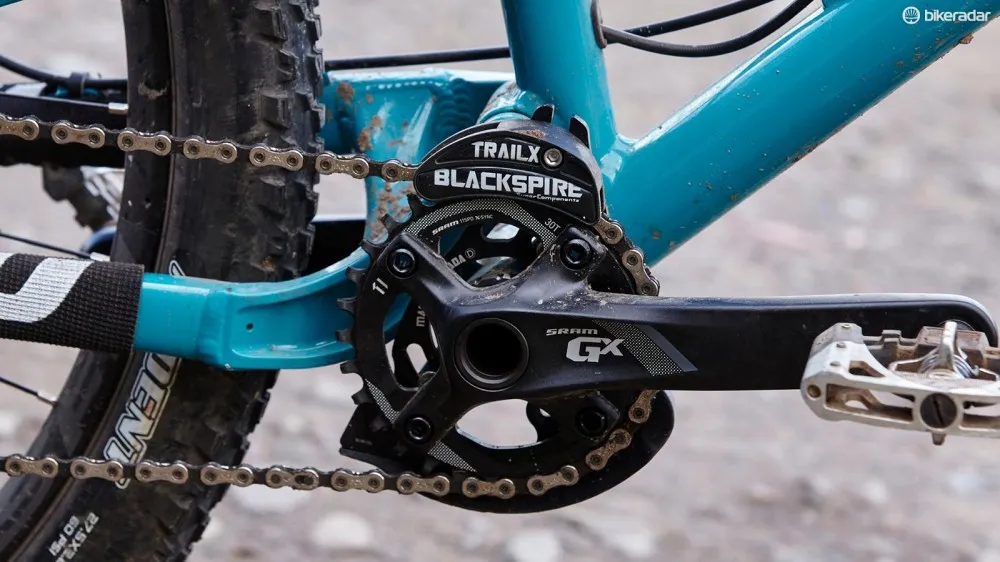
There's no arguing with SRAM's GX drivetrain
The sizing looks odd due to the unusually short seat tube, but this is made up for with a lofty seatpost. The short seat tube means you can upsize if you want an extra-long bike. Front derailleurs and chain guides are both catered for but there’s no room for a bottle cage. It’s not our job to tell you what looks pretty and what doesn’t, but mechanics will appreciate the faff-free external cable routing. Large and aggressive riders will find the frame a little lacking in stiffness though.
Our bike was a custom build, with kit picked on a bang-for-buck basis, so it’s no surprise the spec list was on point. RockShox’s Monarch RT3 DebonAir shock offers a great blend of performance and reliability, and we’d recommend going for the Maxxis Minion front tyre upgrade too. We’d happily downgrade to the Pike RC fork from the flashier RCT3, but we’d consider selling off non-vital organs to hang onto the 1x11 SRAM GX gearing.
Ride and handling: a confident descender but flex and grip niggles
Even in the shorter 140mm travel setting, the Bird is a touch sluggish when pedalling hard or sprinting, but a flick of the shock’s pedal-platform lever keeps this under control. We found the seat angle too slack for the steepest climbs, but the kinked tube means shorter riders will experience a slightly steeper effective seat angle. With the shock in the medium pedalling mode, climbing isn’t at all bad for a bike of this travel, and the long top tube opens out the lungs to improve comfort on the ascents.
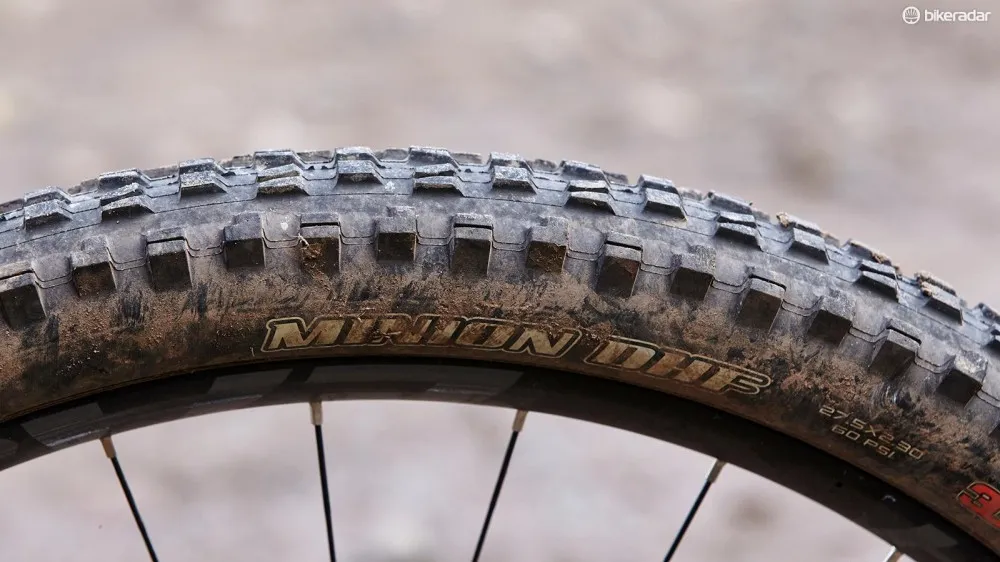
We switched to Minion rubber after experiencing grip issues
Pointed downhill, the progressive suspension deals with bumps of all kinds very well indeed. It’s business as usual with the supple and progressive Pike up front. The rear shock comes with a full complement of Bottomless Ring volume spacers, so there’s no need to buy them separately afterwards. After initial testing, we opted to remove the two spacers fitted to the negative chamber.
This boosted initial suppleness and (crucially) mid-stroke support too. With five spacers in the positive spring, the front and rear suspension were nicely balanced, remaining supple yet ramping up nicely for bottom-out control. Combined with the long/low/slack geometry, this meant the Bird felt extremely comfortable and planted on the straights.
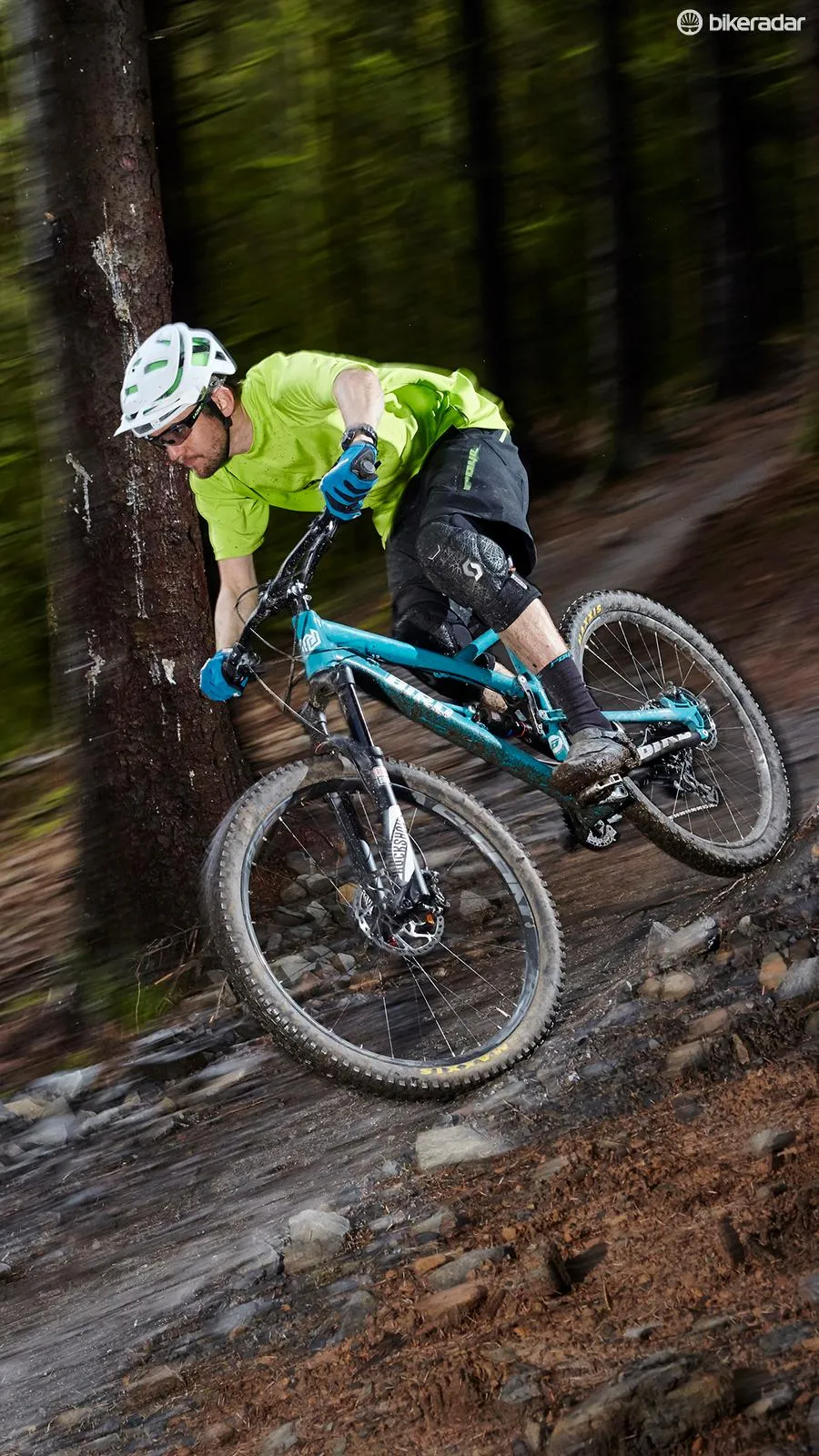
Bigger riders may notice some flex when cornering aggressively
Initially though, we struggled with front end grip. The Maxxis High Roller II front tyre was just too square on the 27mm wide Easton Arc rim, breaking out easily when leaned in hard, so we switched to the rounder Minion in the grippier 3C compound – a £4 upgrade from Bird, which we highly recommend. After playing around with bar height we still struggled to weight the front properly and ride aggressively. Fitting a wider, stiffer bar cured the washy front end, but the extra leverage highlighted some frame flex in the front triangle when ridden hard.
This flex is most apparent when wrestling the bar on stiff climbs or hitting consecutive corners, where it causes the bike to snake lazily through the bends rather than cutting a crisp and precise line. Smaller sizes will likely be stiffer due to the shorter tubes used, and lighter or less hell-for-leather riders will stress the frame less severely too. The on-trend geometry, sorted spec and supple suspension will whisk these riders down gnarly terrain with aplomb, but if you’re a big lad who wants to smash into corners as fast as possible, this probably isn’t the bike for you.
See Bird for international delivery charges
